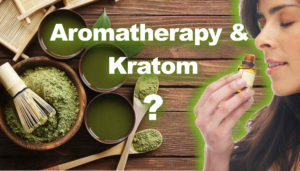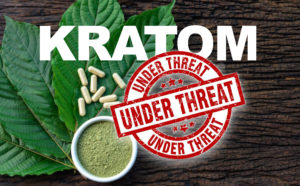Users of kratom know that in small servings, kratom tends to act as a stimulant and motivator, helping increase endurance. In larger servings, kratom tends to act first as an energy boost, but then after a few hours, turns into a sedative.
Drug researchers are calling this “paradoxical effects of kratom.” Let’s look at a 2023 article on this subject from Frontiers in Pharmacology.
https://www.frontiersin.org/articles/10.3389/fphar.2023.1174139/full
Paradoxical is an adjective that describes a paradox, something with two meanings that don’t make sense together. Its Greek roots translate to “contrary opinion,” and when two different opinions collide in one statement or action, or when two statements are both true, but contradict each other, that’s paradoxical.
QUOTE
Introduction: Surveys and case reports have documented kratom use in the United States (US) for over a decade.
However, those reports have generally not examined in depth the role kratom plays in the lives of those who use it regularly for sustained periods.
Until there are controlled studies of the pharmacology and subjective effects of kratom alkaloids in humans, one of the best sources of insight on kratom-product use remains qualitative data with nuanced descriptions of kratom effects from those who use it regularly.
END QUOTE
This starts out in a nice way, explaining how user testimonials serve as anecdotal evidence, which must be supplemented by future lab studies.
Now let’s look at a summary of the study’s results.
QUOTE
Despite some differences among participants, all experienced acute combination effects that were largely, even simultaneously, analgesic and stimulatory.
Most participants had decreased their dosages over time, and one planned to quit. Five of the 10 participants met DSM-5-based criteria for kratom-use disorder (3 mild, 1 moderate, 1 severe, by symptoms counts).
When kratom was inadvertently taken in larger than intended doses, participants described a constellation of symptoms that they called “the wobbles” (a jittery feeling accompanied by what seemed to be nystagmus); this was rare, but could be of scientific and clinical interest as a possible manifestation of serotonin syndrome.
Most participants described tolerance but considered kratom generally safe at low to moderate doses, providing perceived benefits with less potential risk for adverse effects compared to pharmaceuticals or illicit drugs.
END QUOTE
This section of Results is a bit confusing, thus not as scientific as one would expect.
To say that “all experienced acute combination effects that were largely, even simultaneously, analgesic and stimulatory” is really stupid. Because they don’t say what the serving size or frequency was. You likely will not have both energizing and sedating effects. Small serving is stimulant. Larger serving is sedative, though it usually begins as stimulating.
“Most participants had decreased their dosages over time” is a good statement. Kratom is not anything like opioids, alcohol, or benzos. Less is more. To increase serving sizes over time will backfire. Once your body teaches you the proper amount and timing of kratom servings, you’ll stick to it for years.
QUOTE
While self-report has provided some insight into use patterns, and case reports have provided details of adverse effects (Smith K. E. et al., 2023; Feldman et al., 2023), the nuanced story of kratom use and motivations in the US is still largely uncharacterized.
Indeed, few qualitative data on kratom use exist, and none provide narrative accounts of changes in use over time (Swogger et al., 2015; Smith et al., 2021; Tobacyk et al., 2022).
Phenomenological descriptions of kratom’s subjective effects have also not been documented in scientific literature, leaving untapped a basic source of information to help guide the design of controlled experimental studies investigating kratom alkaloids.
END QUOTE
This is interesting. “… few qualitative data on kratom use exist, and none provide narrative accounts of changes in use over time.”
What really needs to happen is for Science to come up with a device that “phenomenologically” measures physical pain in a body. This could prove kratom’s analgesic powers.
QUOTE
Among those interviewed here, the story of kratom is one in which this natural product helps them get through the day productively, while feeling good but not impaired.
One important difference between kratom use in southeast Asia and elsewhere is that, in southeast Asia, most kratom preparations use fresh leaves, which have little or none of the alkaloid 7-hydroxymitragynine, present in the dried products sold commercially in the US and elsewhere (Zhang et al., 2022).
This, and other elements of processing, make kratom at least partly a different pharmacological entity outside southeast Asia. Nonetheless, kratom is used in southeast Asia for purposes broadly similar to those reported by our interviewees (energy, analgesia, general psychological wellbeing) (Singh et al., 2015)….
For example, when assessing kratom withdrawal, researchers and clinicians should likely use the Subjective Opioid Withdrawal Scale and Clinical Opioid Withdrawal Scale, but should also assess for stimulant withdrawal symptoms as kratom alkaloids act on more than the opioid system.
Likewise, these conversations suggest that kratom toxicity or overdose may not present as opioidergic in nature, but possibly adrenergic or serotoninergic.
In addition to pharmacokinetic studies, which need to be dramatically expanded and include measurement of pharmacodynamics, behavioral pharmacology, and drug discrimination studies that help differentiate opioidergic, serotonergic, and other effect profiles are warranted (Tanna et al., 2022).
Until sufficient scientific funding and manpower are harnessed to conduct human laboratory studies on kratom alkaloids, including clinical trials for some of the conditions for which people currently use kratom, we should invite people using kratom to share their expertise on kratom-induced effects via these in-depth qualitative discussions. At present, they remain the experts on this subject. This is both an indictment of the current science and a call for further investigation.
END QUOTE
You are encouraged to read the whole article, loaded with personal testimonies on kratom use.















